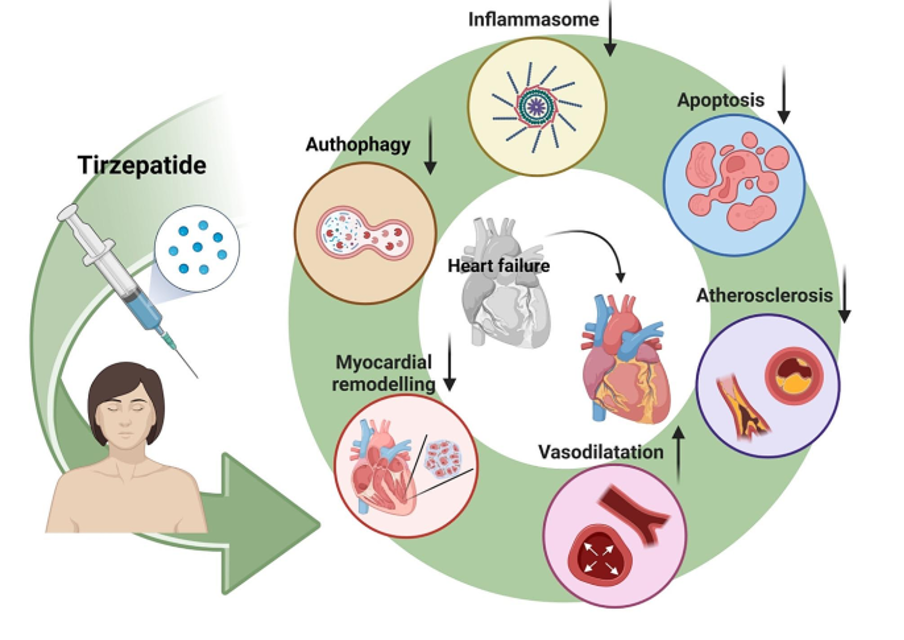
Anesthetic Care of the Pregnant Patient With CVD: Key Points
The following are key points to remember from an American Heart Association Scientific Statement on anesthetic care of the pregnant patient with cardiovascular disease (CVD):
- Maternal mortality rates in the United States continue to exceed those of other well-resourced countries, with CVD cited as the leading cause. To address this shortfall, the authors emphasize the value of a multidisciplinary care team that includes obstetricians, cardiologists, maternal-fetal medicine physicians, anesthesiologists, intensivists, nurse specialists, and others, to provide comprehensive planning and care to pregnant patients with congenital or acquired CVD. During the peripartum period, the anesthesiologist assumes a key leadership role within the care team.
- Risk stratification tools, including the maternal modified World Health Organization (mWHO) score, are helpful for triage decision-making, but important limitations of these tools exist. Maternal mWHO scores are derived from population-level data, and do not take into account quantitative features such as valve gradients that reflect individual patient risk. Class III conditions confer a significantly elevated risk of mortality, and Class IV conditions confer extremely high risk of maternal mortality. The peripartum care plan should be created early when possible, usually between 20-28 weeks, and documented clearly in the patient’s medical record for transparent communication. The recommendation for Class III and IV patients is for delivery at a Maternal Level IV Care Center.
- Mode of delivery: Shared decision-making on mode of delivery is important in all obstetrical patients, but even more so in patients with high risk of morbidity and mortality. Vaginal delivery is the preferred mode for most women with CVD, since it is associated with less blood loss, fewer wound infections, fewer thromboembolic events, and more gradual hemodynamic fluctuations. Assisted second stage should be considered in patients for whom prolonged Valsalva maneuver may pose risk of clinical deterioration due to fluctuation in preload (severe ventricular dysfunction, Fontan, or pulmonary arterial hypertension) or abrupt increase in sheer stress (high-risk aortopathy). Cesarean delivery may be appropriate when there is high risk of imminent maternal decompensation, or when expedited delivery facilitates coordination of postpartum interventions (including valvuloplasty or mechanical circulatory support). The anesthesiologist should advise the care team on the minimum time interval needed for interruption of anticoagulation that allows safe performance of neuraxial anesthesia, in accordance with American Society of Regional Anesthesia guidelines.
- Anesthesia for vaginal delivery: Neuraxial labor analgesia decreases maternal plasma epinephrine and norepinephrine, lending support to epidural placement early in labor at the onset of painful contractions. A well-functioning epidural catheter provides a conduit for conversion to surgical anesthesia should emergency cesarean become necessary. The epidural catheter should be promptly replaced if it does not provide sufficient analgesia for labor. Use of saline rather than air for loss-of-resistance technique may decrease risk of venous air embolism in the event of intravascular needle placement. The risk-benefit of the traditional epidural test dose (lidocaine with epinephrine) should be considered carefully. Epidural medication should be titrated slowly over at least 10-20 minutes to minimize risk of hypotension due to withdrawal of sympathetic tone.
- Anesthesia for cesarean delivery: Neuraxial anesthesia is usually preferred versus general anesthesia, but indications for use of general anesthesia include cardiopulmonary decompensation necessitating tracheal intubation, maternal inability to tolerate supine positioning, concurrent anticoagulation, inadequate platelet count, or maternal refusal to undergo the neuraxial procedure.
- Monitoring and management: Medications used during labor may have detrimental circulatory impact on the patient with CVD. Magnesium sulfate leads to hypotension, and terbutaline causes tachycardia and increased myocardial contractility. Sustaining adequate afterload is essential for maintaining coronary perfusion in patients with left ventricular (LV) hypertrophy, stenotic valvular lesions, LV outflow tract obstruction, or pulmonary hypertension. Decreased afterload may lead to hypoxemia in patients with intracardiac shunt, and prompt correction with vasopressors is critically important. Regurgitant valvular disease without significant stenosis may be associated with ventricular dilatation, and mandate avoidance of bradycardia or hypertension. Arterial pressure monitoring is standard in mWHO Class III-IV patients, and central venous pressure access and monitoring is mostly reserved for cases of cardiopulmonary decompensation including right ventricular (RV) failure requiring titration of vasopressors, inotropes, or pulmonary vasodilators, but may also be needed in patients with limited peripheral vascular access. Use of focused cardiac ultrasound to assess conditions including volume status, global LV and RV function, regional wall motion abnormalities, and pericardial effusion has been shown to reduce time to diagnosis and treatment.
- Prevention and management of postpartum hemorrhage (PPH): Intravenous oxytocin infusion is a first-line uterotonic used for prevention of PPH. However, bolus administration or infusion rates exceeding the ED95 produce side effects including hypotension, without producing additional clinical benefit. Second-line uterotonic medications (carbaprost, methylergonovine) produce vascular and pulmonary side effects that may negatively impact patients with CVD, and are generally avoided. Use of obstetrical maneuvers including uterine compression sutures or Bakri balloon placement should be considered early. A large (>20,000 patient) randomized double-blinded trial of patients with PPH demonstrated that use of antifibrinolytic tranexamic acid within a 3-hour window reduced death attributable to bleeding without increased incidence of thrombosis (excluding patients with coronary stent or cardiac arrest).
- Extracorporeal membrane oxygenation (ECMO)may provide a last line of support for severe, refractory hypoxemia (venovenous ECMO) or ventricular failure (arteriovenous ECMO), and appears to improve survival if employed early during a clinical crisis. A cardiothoracic surgeon and perfusionist should be notified in advance if need for ECMO is anticipated.
- Recovery care: Initiatives have been developed to help clinicians recognize signs of undiagnosed or new-onset CVD. Prompt evaluation is recommended for heart rate >120 bpm, SpO2≤95%, respiratory rate >25, systolic blood pressure >160 mm Hg, or shortness-of-breath with minimal exertion. Maternal cardiac arrest occurs in 8.5/100,000 deliveries. Leading causes of arrest are hemorrhage (38.1%), heart failure or myocardial infarction (15.2%), amniotic fluid embolism (13.3%), and sepsis (11.2%). The anesthesiologist has multiple roles as code team leader. Resuscitation should be performed in a manner identical to that recommended by the AHA for adult patients (with the same compression ventilation ratios, use of backboard, airway support, medication, and defibrillation algorithms), with some added features. Key differences for the pregnant patient include left uterine displacement and preparation for fetal delivery concurrently with initial resuscitative efforts. Perimortem cesarean section should be performed within 4-5 minutes of cardiac arrest if the uterus extends up to or above the height of the umbilicus (~20 weeks of gestation).
- Future directions: Optimal care of the obstetric patient with CVD remains poorly defined in many specific circumstances. There are numerous unanswered questions that would benefit from formal study. Multicenter registry data is cited as a potential source of information. Discussion of expanding anesthesia residency training to include greater emphasis on the disciple of cardio-obstetrics has been proposed by the authors.







